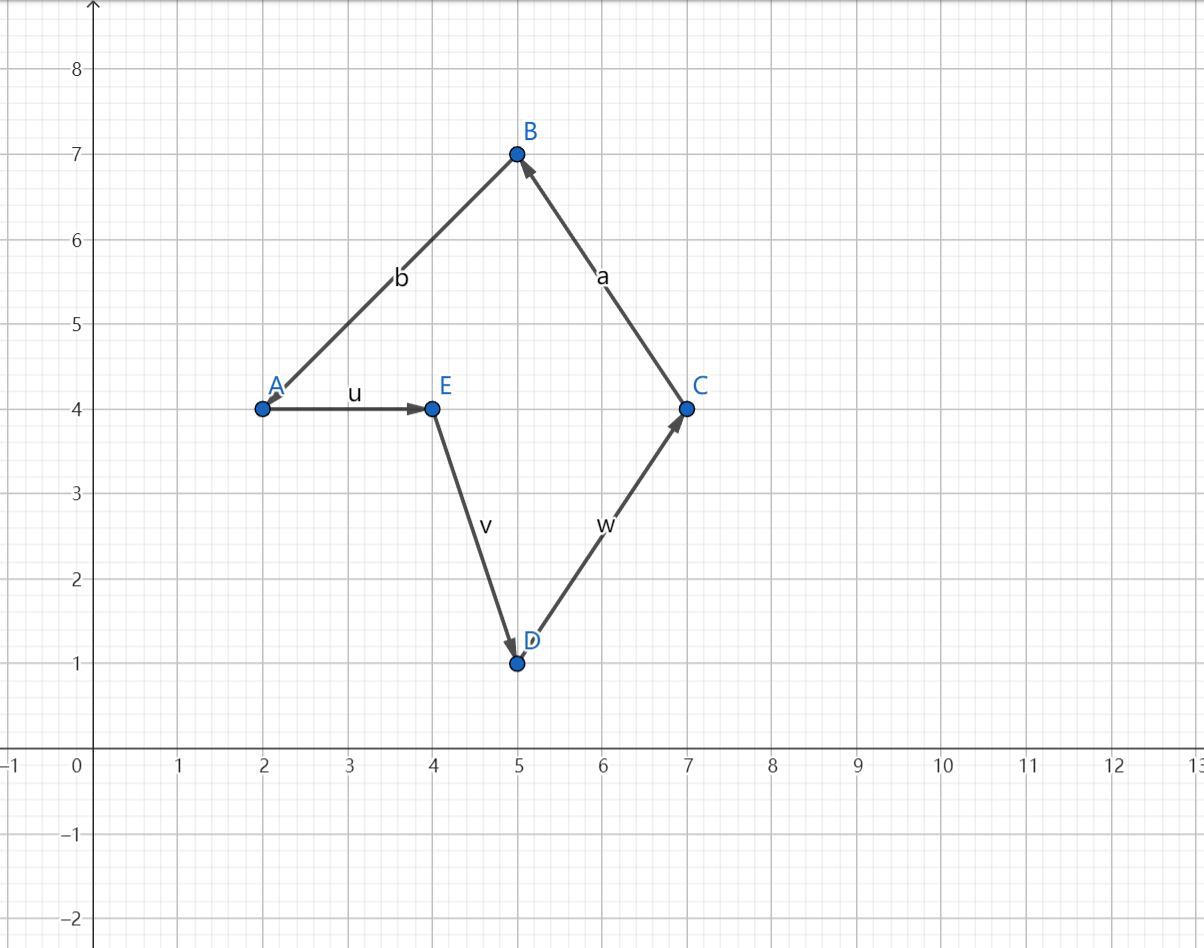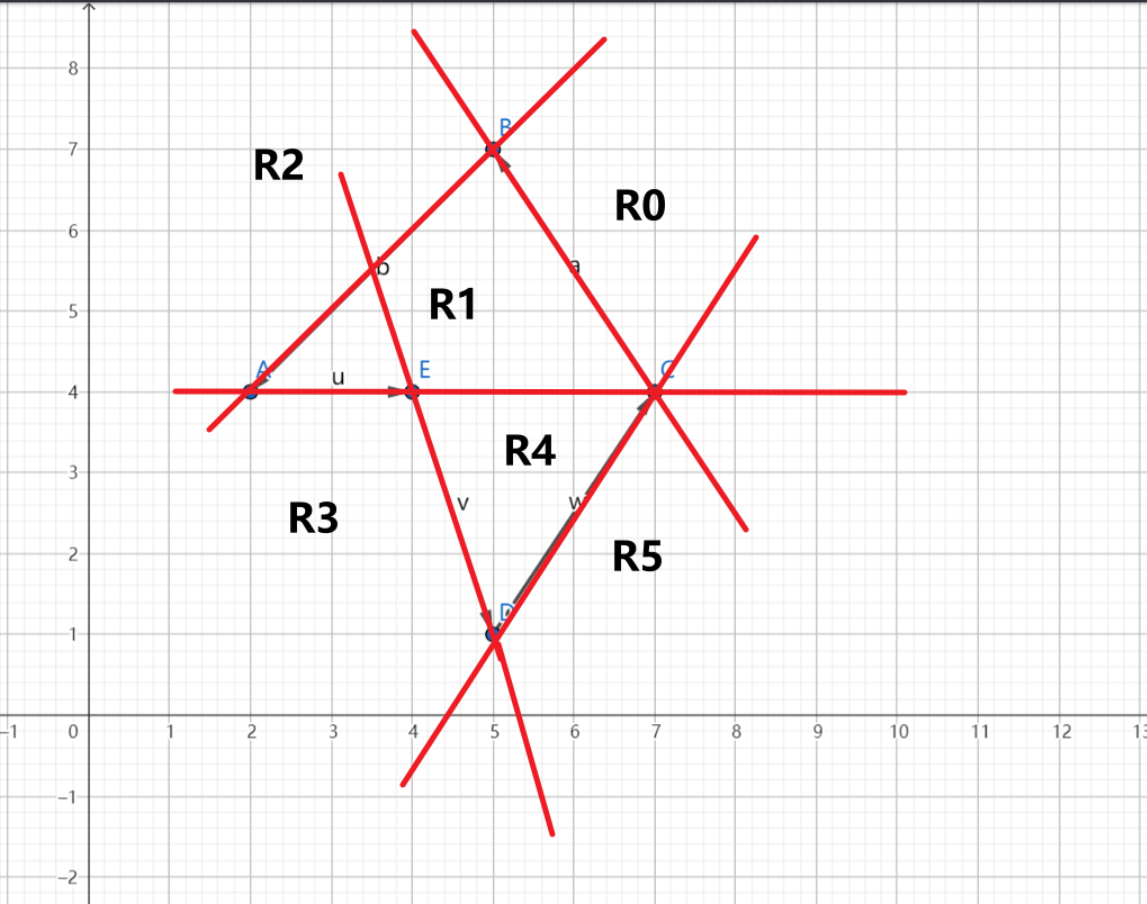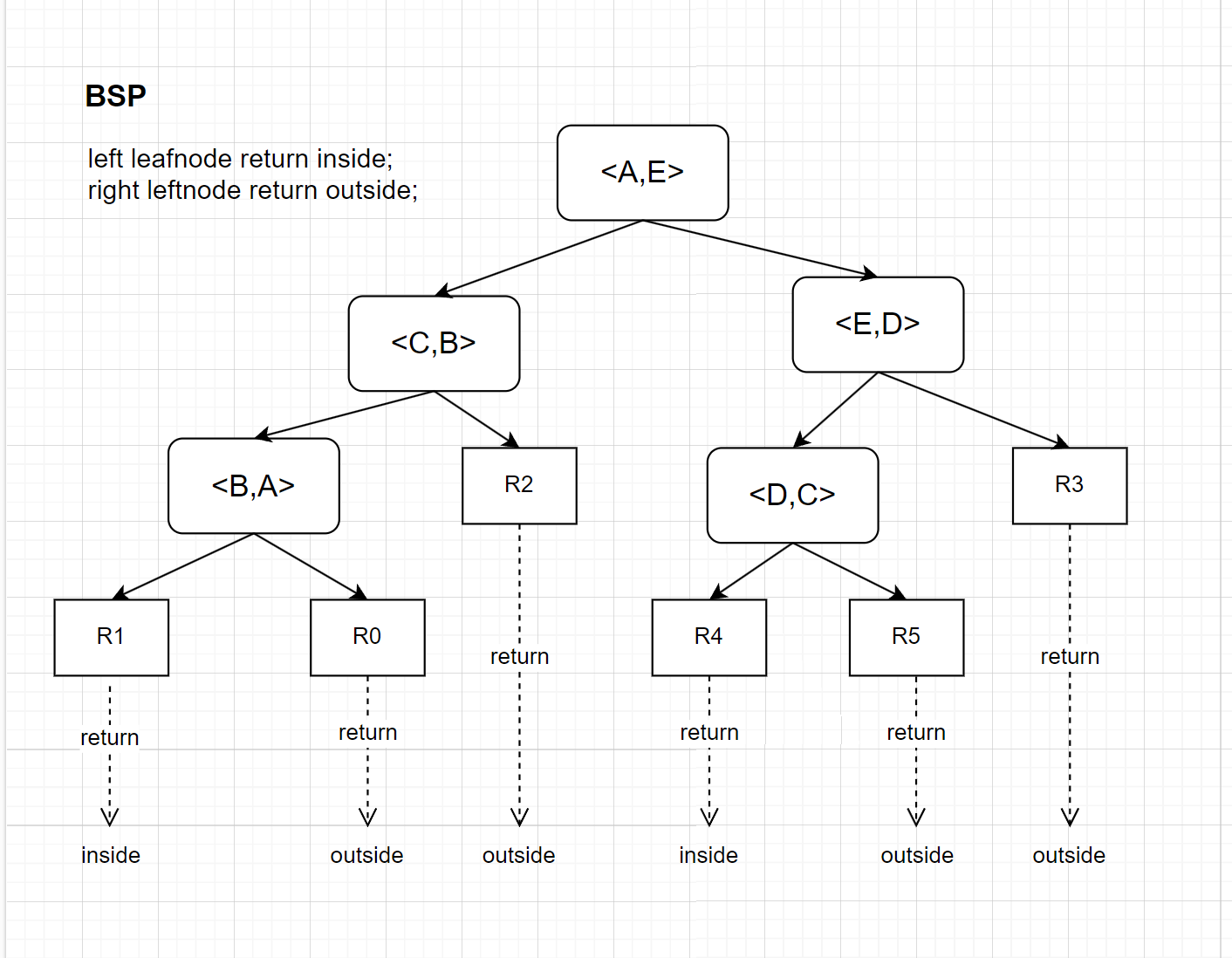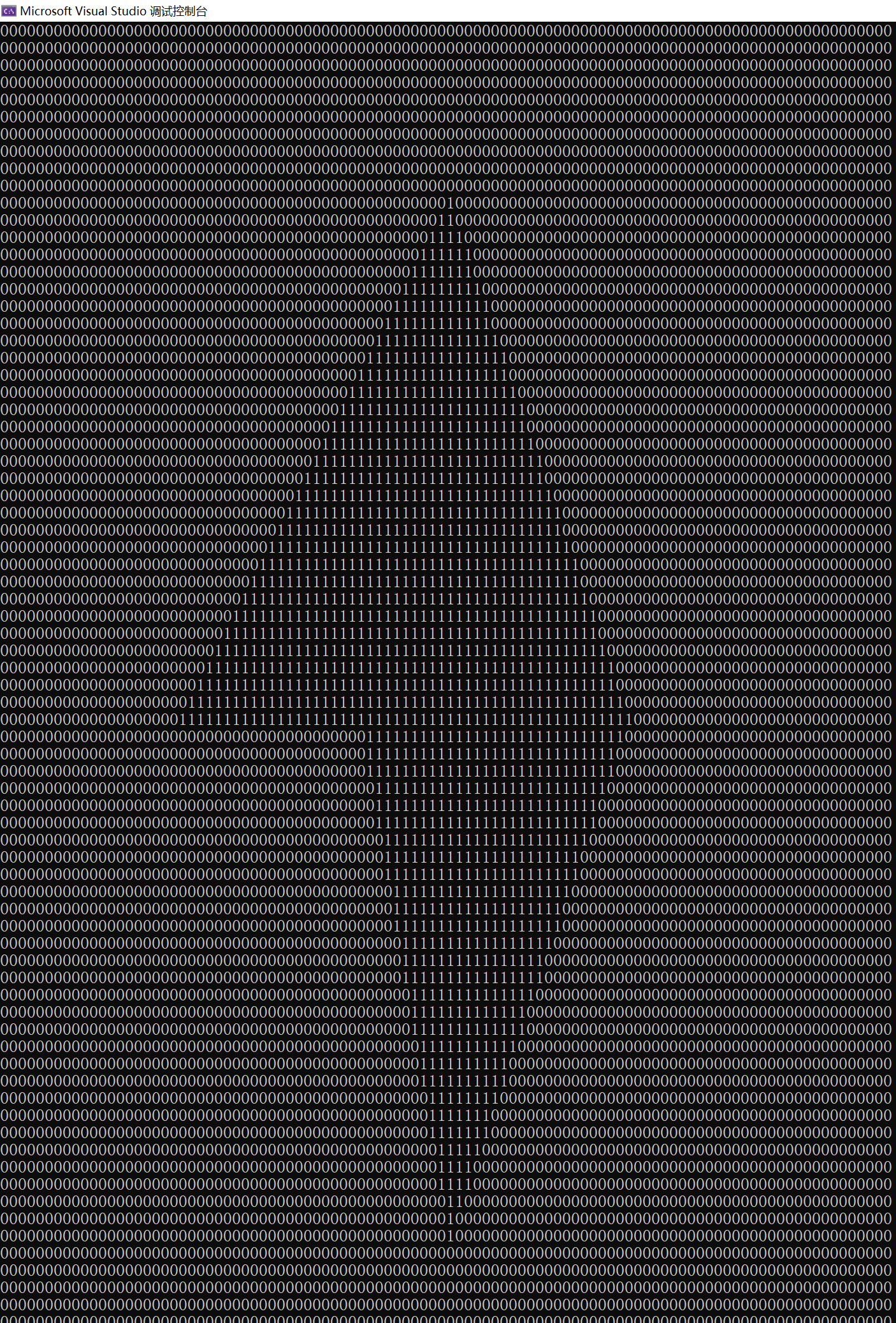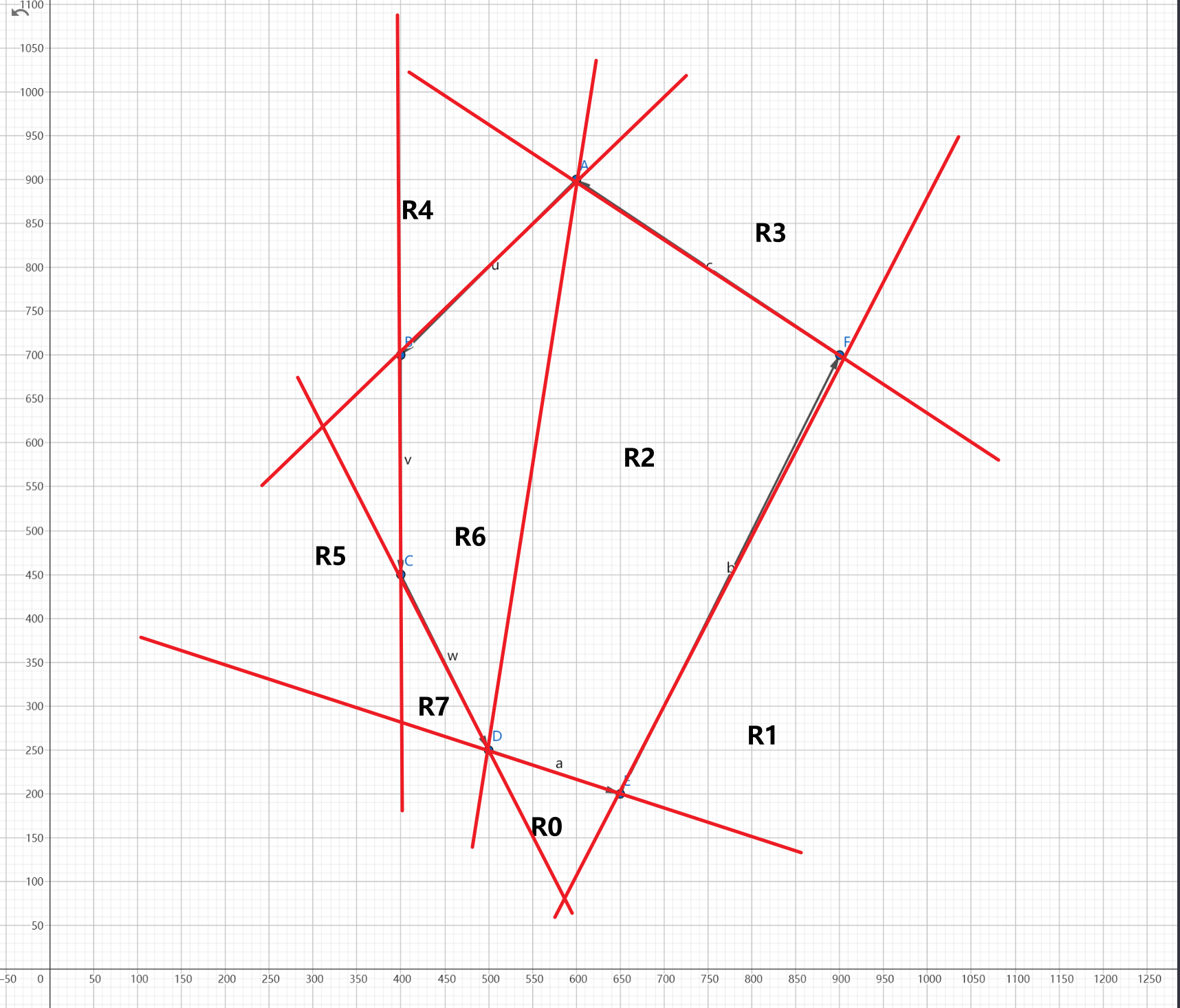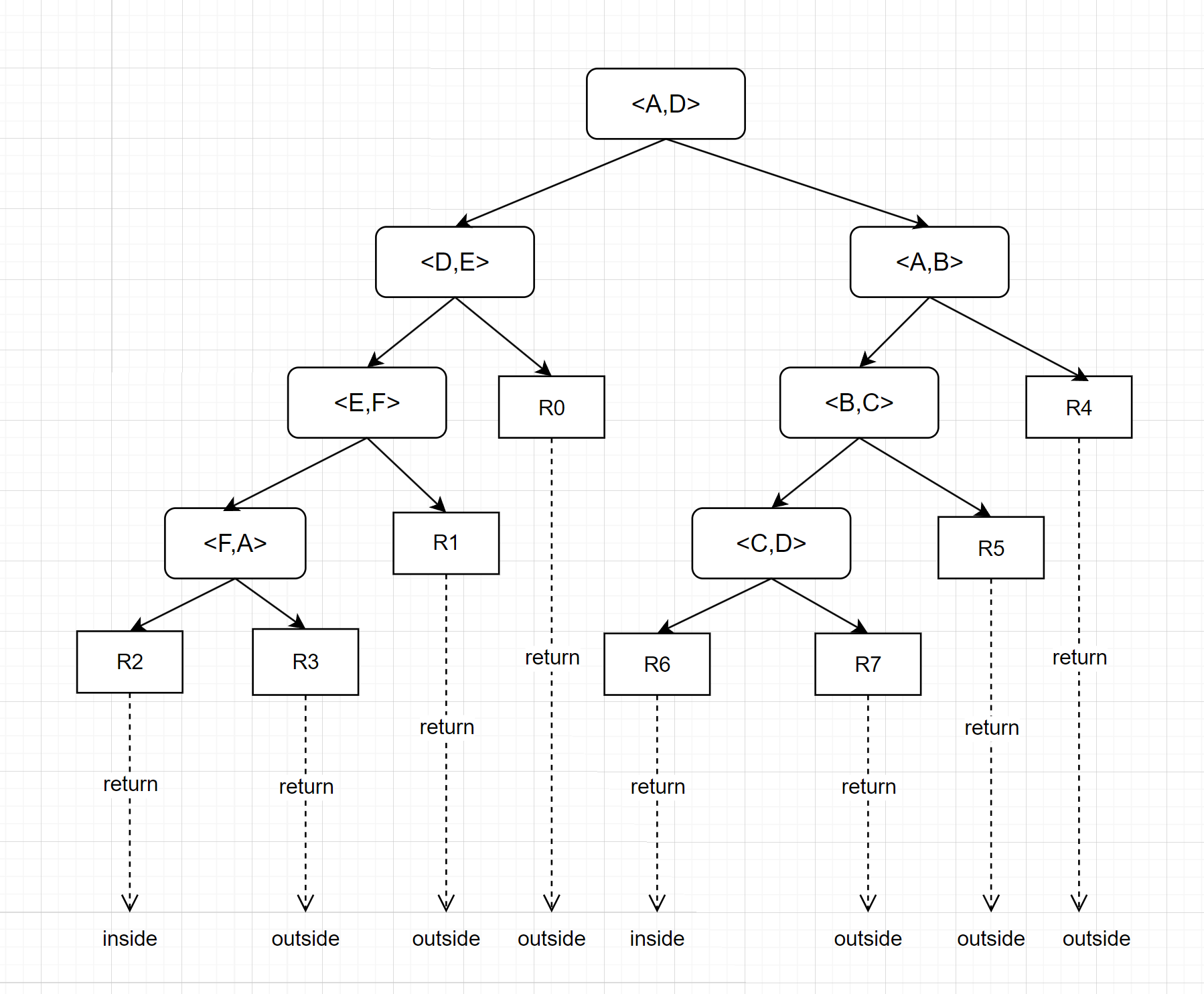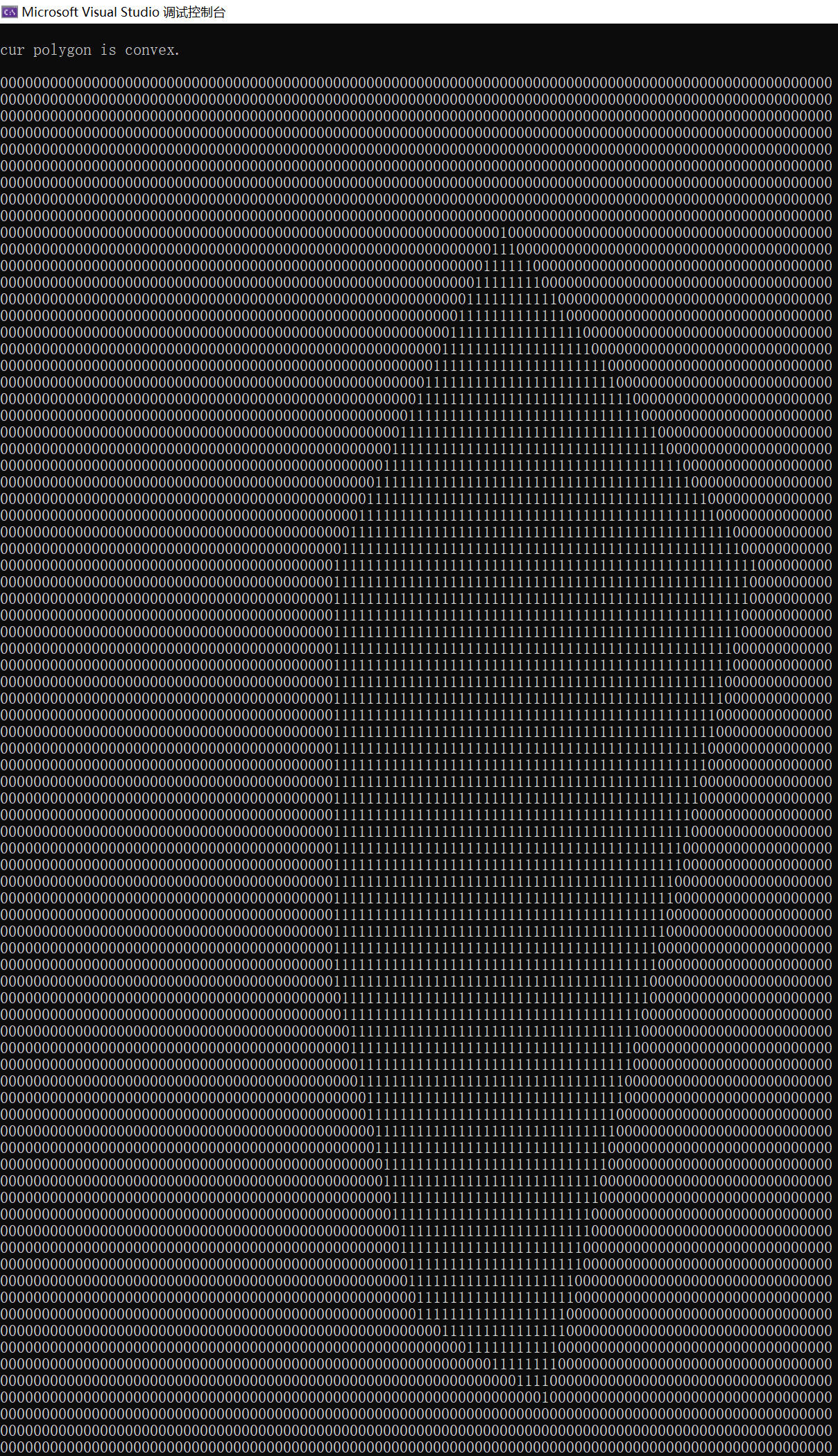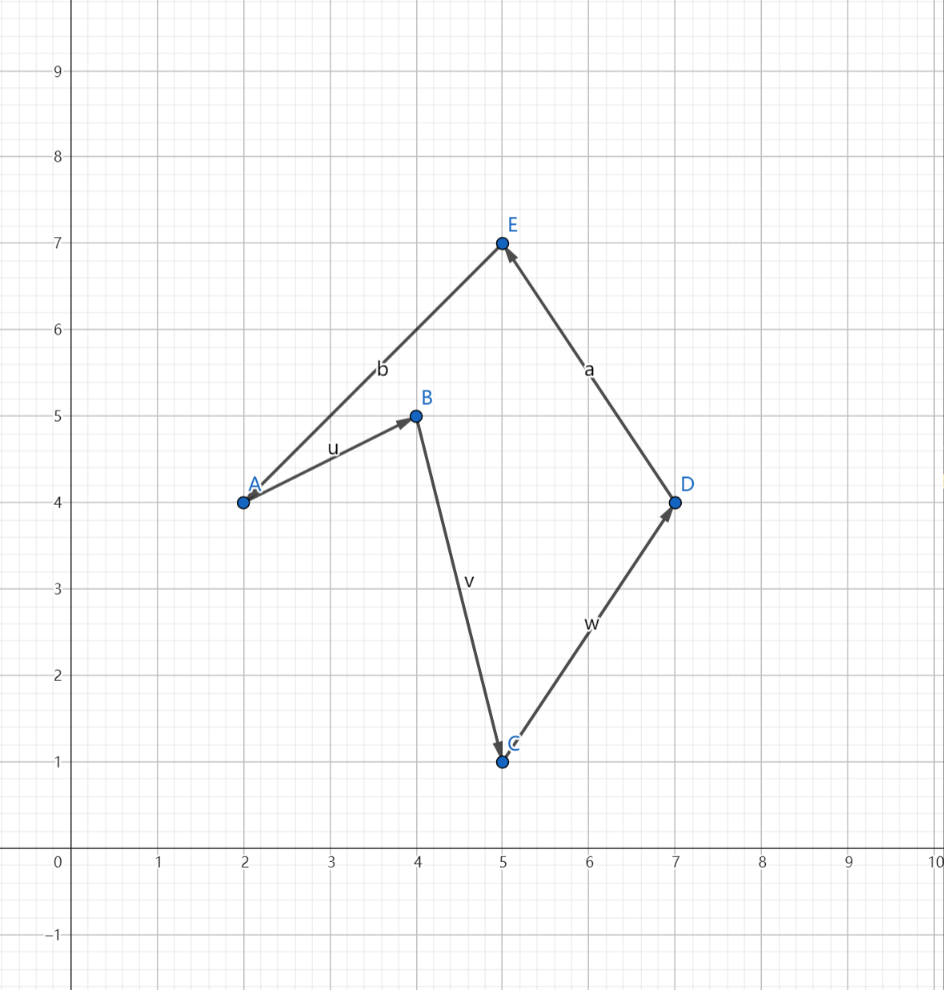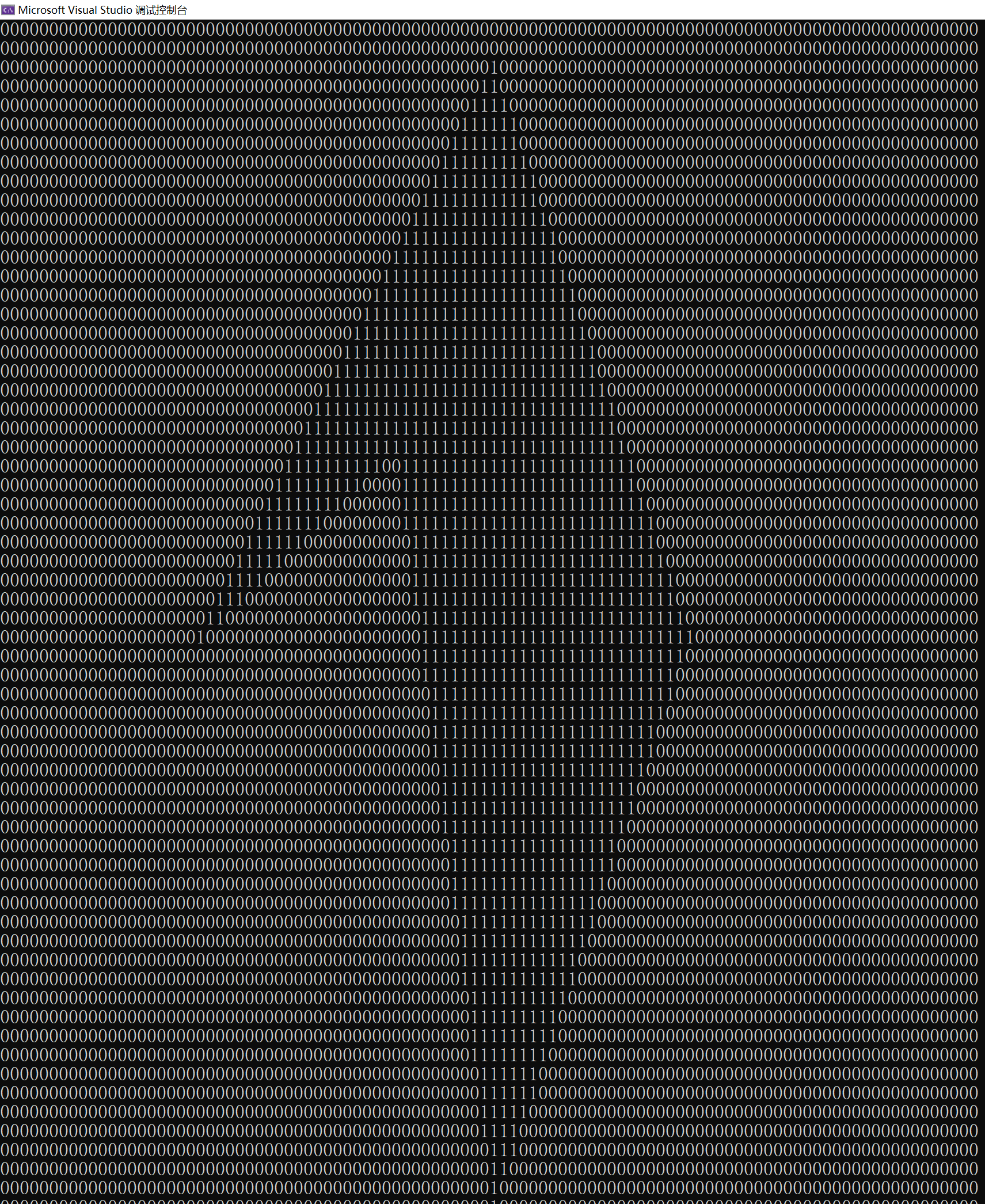yudong.lin
2023.09.26
-
使用BSP完成任意多边形点阵的激活, 零依赖第三方库
-
编译的可执行文件 ./myproject.exe (为方便把可执行文件复制到了根目录)
-
./build/Debug/myproject.exe 为编译后的重新生成可执行文件
-
重新编译时清清空./build文件夹下文件,在build下执行cmake后重新编译
-
./script/build.bat 为编译./CMakeList.txt 脚本,./script/run.bat 为运行myproject.exe并持久化到./dot.data 脚本
-
./dot.data 为输出的持久化文件
-
为了可视化输出容易观察,使用的是100*100的点阵,要修改点阵大小,只需要修改 ./main.cpp下 N的宏
#define N 100
Question: 对于 1000x1000 的 规则点阵, 左下角坐标为 0,0, 相邻点的距离为 1; 给出算法,对于给定的一个多边形,把多边形内的那些点标记为 1;
Solution: BSP
- 判断是否凸包
- convex:二分split;concave:边分割
Test:
std::vector<pair<double,double>> dots{{20,40}, {40,40}, {50,10}, {70,40}, {50,70}};
std::vector<pair<double,double>> dots{{600,900}, {400,700}, {400,450}, {500,250}, {650,200}, {900,700}};
vector<pair<double,double>> concaveDots1{{20,40}, {40,50}, {50,10}, {70,40}, {50,70}};
